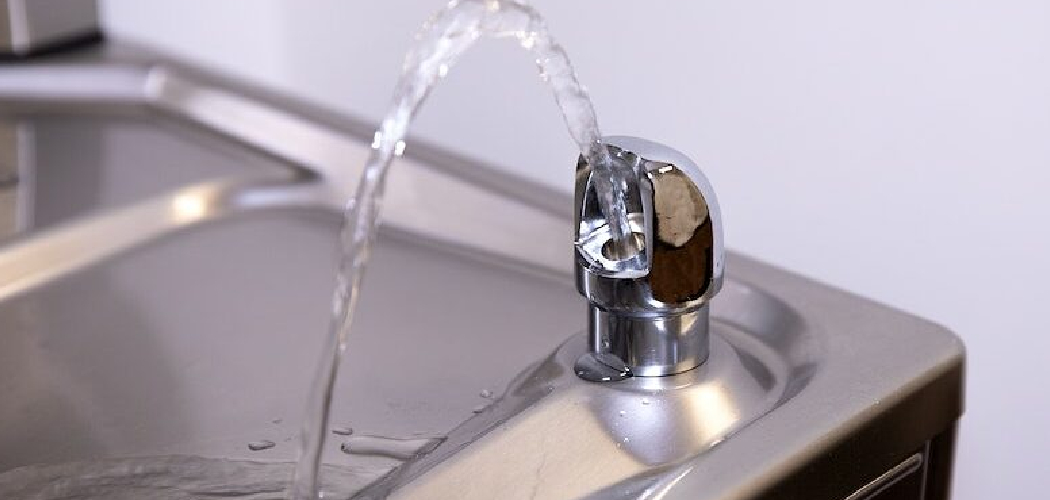Identifying the type of tap you have is crucial for various maintenance, repair, or replacement tasks. With so many designs and mechanisms available, understanding the key features of your tap can save time and ensure compatibility with your plumbing needs. Understanding how to identify tap type can help in maintaining it properly and troubleshooting common issues that may arise over time.

Why Identifying Your Tap Type is Important
Knowing your tap type is critical for ensuring proper maintenance and smooth operation of your plumbing system. Different tap types have unique mechanisms and parts, which means that repairs or replacements require specific tools and components.
For instance, a ceramic disc tap will require entirely different care than a traditional compression tap. Identifying the tap type also helps prevent costly mistakes, such as purchasing incompatible parts or incorrectly diagnosing an issue. Additionally, understanding your tap type can streamline communication with plumbers or hardware professionals, ensuring you get the right advice and solutions quickly.
Tools to Help You Identify a Tap Type
Identifying the type of tap in your home can be made easier with a few essential tools and resources. A flashlight is particularly useful for inspecting the tap’s internal components, especially in dimly lit areas. A magnifying glass can also help you closely examine small details like washers, cartridges, or ceramic discs. Additionally, a basic plumbing toolkit, including a wrench and screwdriver, can aid in disassembling parts of the tap to get a better look inside.
For those unsure about their findings, consulting a manufacturer’s guide or using smartphone apps designed to identify plumbing fixtures can provide further clarity. Having a camera or smartphone handy to photograph the tap’s components can be beneficial when seeking advice from professionals or local hardware stores. These tools and resources simplify the process, making it less daunting even for beginners.
10 Methods How to Identify Tap Type
1. Count the Number of Handles or Levers
One of the easiest ways to start identifying your tap is by observing the number of handles or levers. A single-handle tap, often called a mixer tap, combines hot and cold water through a single spout and is operated with one lever that moves side-to-side for temperature and up-and-down for flow.

In contrast, a dual-handle tap will have separate hot and cold controls, typically mounted on either side of the spout. This distinction helps you narrow down whether you’re dealing with a mixer tap or a pillar-style tap system.
2. Examine the Spout Style and Flow
Taps come with various spout designs, which can indicate their type and intended use. For instance, swan-neck or gooseneck spouts are commonly found on kitchen mixer taps to allow for clearance over deep sinks. Waterfall spouts are typical in modern bathrooms and suggest a designer-style basin tap. Wall-mounted spouts, often seen in baths or minimalist sinks, indicate a more complex installation behind the wall. Observing how the water flows—smooth or aerated, single stream or spray—can further hint at whether you’re dealing with a standard tap, monobloc, or specialty model.
3. Check for Cartridge, Washer, or Disc Operation
Different tap types operate using distinct internal mechanisms: compression washer taps, ceramic disc taps, ball taps, and cartridge taps. To identify this, try turning the handle. If the tap needs several turns to open or close, it likely uses a rubber washer (found in traditional pillar taps). If it turns just a quarter or half-turn, it probably uses a ceramic disc or cartridge mechanism, typical of modern taps. Knowing the internal mechanism will be crucial when you’re repairing or replacing internal parts like seals or cartridges.
4. Look Under the Sink at the Mounting Style
If you’re able, take a look underneath your sink to check how the tap is installed. Single-hole mounts are common with monobloc mixer taps, while two-hole or three-hole mounts often suggest separate hot and cold taps or more traditional bridge tap setups. Wall-mounted taps will have concealed pipework, typically requiring in-wall plumbing work.

The mounting arrangement not only helps identify the type but is also key when replacing the tap, as you’ll need one that matches the same number and spacing of holes.
5. Identify the Tap’s Function and Location
The function and location of the tap offer clues to its type. Kitchen taps are usually mixers with high-arc spouts and sometimes include features like pull-out sprays or filtered water outlets. Bathroom basin taps are smaller and may use separate hot/cold pillars, monobloc mixers, or sensor taps.
Bath taps tend to be larger, with higher flow rates and possibly integrated shower diverters. Outdoor garden taps are usually single-function compression taps made for durability. Understanding the functional context of the tap helps determine whether it’s built for utility, aesthetics, or both.
6. Search for Manufacturer Marks or Model Numbers
Most modern taps have branding or identification marks from the manufacturer, usually found on the base, under the spout, or on the handle. This information can lead you directly to the tap type by searching online or on the brand’s website.
If the tap is relatively new, a model number might also be stamped or engraved on a small plate or label beneath the sink. This is particularly helpful if you’re trying to find replacement parts, as tap components are often specific to a brand or series.
7. Listen for the Sound and Feel of Operation
When you turn on a tap, pay attention to the resistance, smoothness, and sound it makes. A stiff or squeaky turn usually signals a compression washer tap, while a smooth, near-silent operation points to a ceramic disc or cartridge system. Ball taps, common in older kitchens, often feel slightly loose and make a soft clicking noise as they move. These sensory clues, though subtle, can reveal what kind of valve mechanism is inside the tap without the need to disassemble it.
8. Observe the Aesthetic and Design Era
Tap styles often align with specific design eras. For instance, crosshead taps with separate hot and cold knobs are common in vintage or traditional settings, while sleek, minimalist taps with flat levers are characteristic of contemporary bathrooms. Brushed brass or black finishes are modern trends, while chrome with fluted handles harks back to mid-century or Victorian styles. While not always definitive, the visual styling can give you a strong hint about the tap’s type, particularly when paired with other observations.
9. Compare with Online Catalogs and Images
When you’re unsure, take a photo of your tap and compare it with online plumbing supply catalogs or DIY home improvement websites. Many suppliers categorize taps by type—such as monobloc, pillar, bridge, wall-mounted, deck-mounted, sensor, or thermostatic—making visual comparison a useful identification method.

You can also post images to DIY forums or manufacturer help desks, where experienced users and professionals can often identify your tap type just by looking at it.
10. Disassemble for Direct Inspection (If Necessary)
As a last resort, especially when making repairs, you may need to partially disassemble the tap to inspect its internals. This involves removing the handle (usually via a hidden screw or cap), then extracting the cartridge, washer, or ceramic disc inside. The type of valve mechanism you find will directly tell you the tap’s type—ceramic disc for most modern taps, compression washer for traditional ones, and so on. Make sure to turn off the water supply and proceed cautiously if you choose this method, and take photos as you go to help with reassembly.
Things to Consider When Inspecting a Tap
- Tools Required: Ensure you have the necessary tools, such as a screwdriver, wrench, and pliers, to safely disassemble and reassemble the tap components.
- Water Supply: Always turn off the water supply to avoid leaks or spillage during the process. Check both hot and cold water lines are properly shut off.
- Protective Measures: Place a towel or basin beneath the tap to catch any residual water or fallen components, preventing damage to your sink or countertop.
- Component Identification: Familiarize yourself with the specific type of tap mechanism you are dealing with (e.g., ceramic disc, compression washer). This knowledge can save time and make repairs more efficient.

- Documentation: Take clear photos of each step during disassembly to use as a reference for reassembly. This is particularly important for complex mechanisms with multiple small parts.
- Replacement Parts: Verify if you need replacement parts, such as washers or cartridges, before starting. Having compatible components on hand will prevent delays in the repair process.
By keeping these considerations in mind, you can conduct a smoother and more effective inspection or repair of your tap.
Conclusion
Identifying your tap type is an essential first step in maintenance, repair, or replacement. While it might seem confusing at first due to the wide variety of designs and mechanisms available, using a combination of these ten methods can quickly narrow down your tap’s category.
Whether you’re examining the handles, listening to the operation, checking the mount, or referencing the manufacturer, each method builds on the others to form a clear picture of your tap’s identity. So, there you have it – a quick and easy guide on how to identify tap type.

